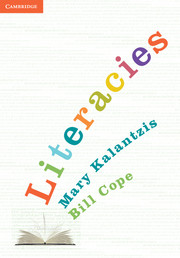Book contents
- Frontmatter
- Contents
- Acknowledgements
- Introduction The work of learning and teaching literacies
- Part A The ‘Why’ of Literacies
- Chapter 1 Literacies on a human scale
- Chapter 2 The purposes of literacies
- Part B Approaches to Literacies
- Part C The ‘What’ of Literacies
- Part D The ‘How’ of Literacies
- References
- Index
Chapter 1 - Literacies on a human scale
from Part A - The ‘Why’ of Literacies
- Frontmatter
- Contents
- Acknowledgements
- Introduction The work of learning and teaching literacies
- Part A The ‘Why’ of Literacies
- Chapter 1 Literacies on a human scale
- Chapter 2 The purposes of literacies
- Part B Approaches to Literacies
- Part C The ‘What’ of Literacies
- Part D The ‘How’ of Literacies
- References
- Index
Summary
Overview
This chapter focuses on how we humans have made meaning in three historical moments. We will start with what we call ‘first languages’, the languages used before we had writing as we know it. We will then discuss some consequences of the development of writing, which began about five millennia ago, and how this culture of writing intensified with the mass application of printing after the fifteenth century and continues into modern times as more and more of the world’s peoples learn to read and write. Thirdly, we will consider aspects of the new cultures of meaning-making that emerged during the twentieth century, supported first by photographic technologies and more recently by technologies for the electronic production and distribution of meaning.
It has been established by philosophers and scientists of language that writing is no mere transcription or writing down of thought. It is not even a direct record or copy of speech. It is a ‘technology’ or ‘artefact’ developed for a specific way of thinking and being. The ways of thinking and the everyday experiences of people who live in cultures where speaking is the main form of communication are very different from those whose cultures are dominated by writing. This has great relevance as we consider what is appropriate literacy teaching and learning in our contemporary times.
- Type
- Chapter
- Information
- Literacies , pp. 21 - 40Publisher: Cambridge University PressPrint publication year: 2012



